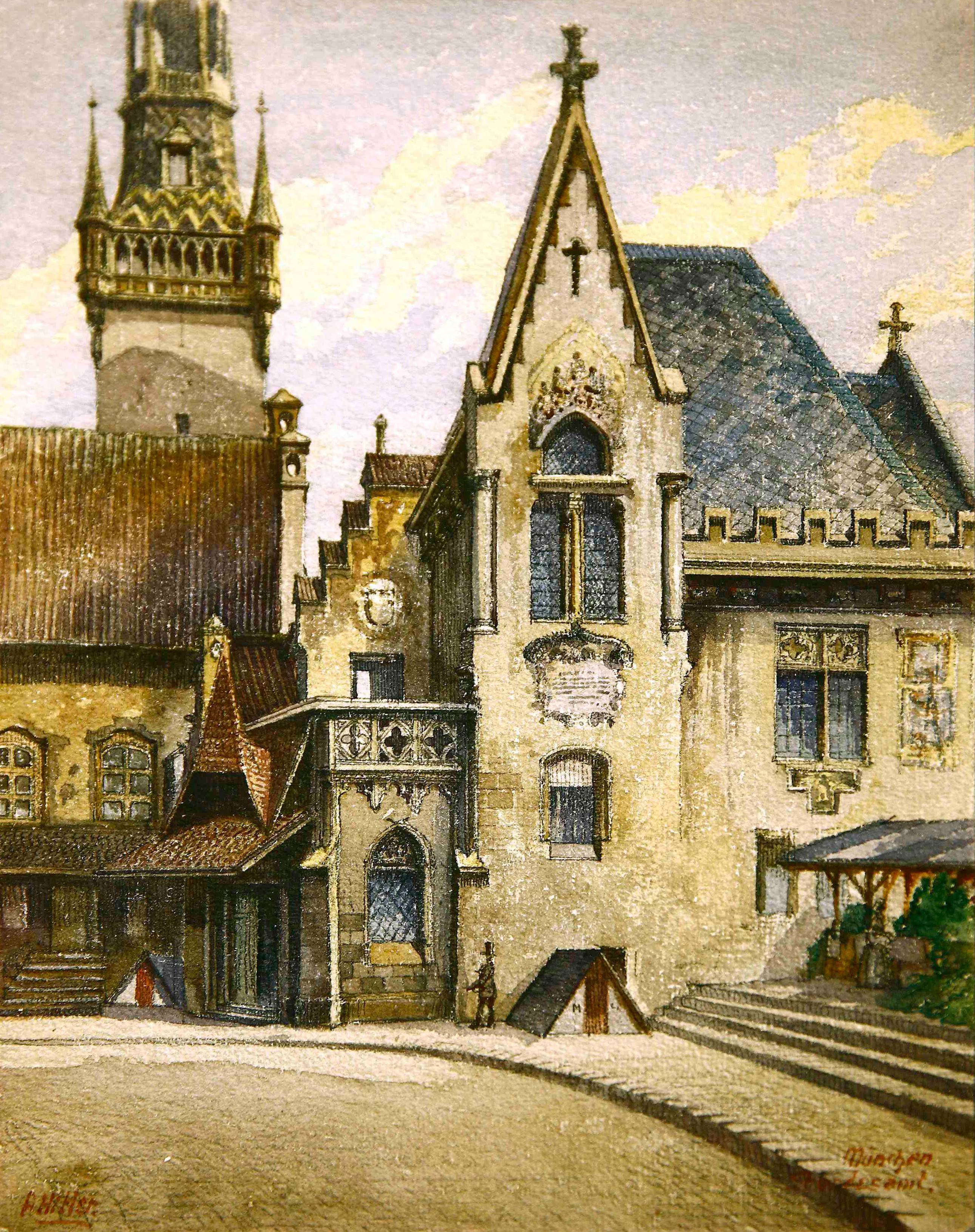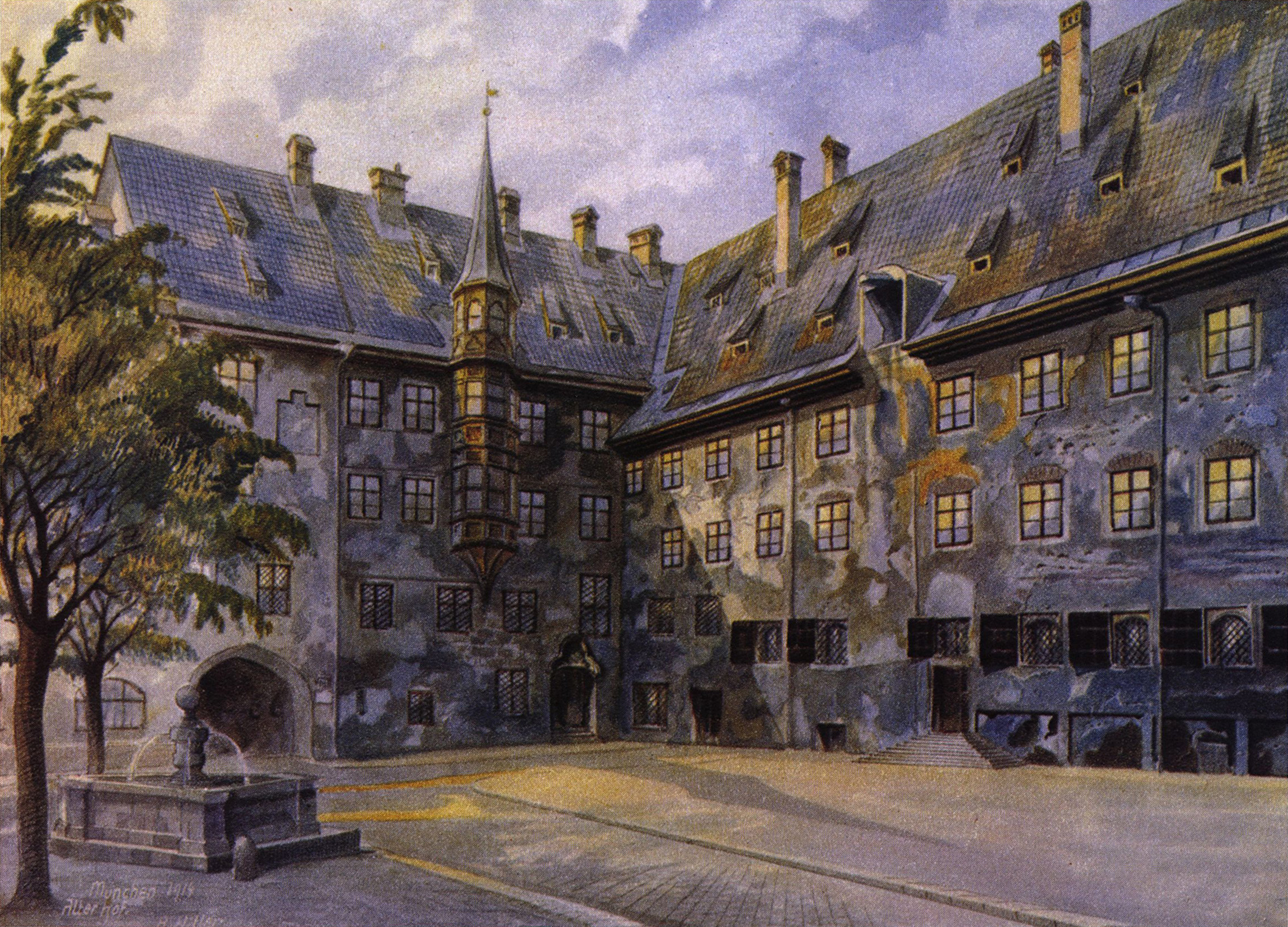As works of art they are pleasant enough to the eye but, being almost instantly forgettable, don’t linger too long in the memory. Painted almost a century ago in Vienna, they were probably sold to a middle-class family or a local business where, hung on a wall, they were promptly ignored for years to come. But whenever one of these paintings comes up for auction, they usually fetch in the region of about £2,000 each. The price tag reflects not the works’ artistic value but the notoriety of the man who painted them – for they were created by a young Adolf Hitler.
 So how did the future dictator start off as an artist?
So how did the future dictator start off as an artist?
‘Artist? No, never as long as I live’
Hitler fared poorly at school. One teacher in Hitler’s Austrian hometown of Linz later described the schoolboy as ‘argumentative, autocratic, self-opinionated, and bad-tempered and unable to submit to school discipline.’ Art was the one subject Hitler enjoyed but when, as an 11-year-old, he approached his father and declared his ambition to become an artist, Hitler Snr took it badly. ‘Artist? No, never as long as I live.’
All his working life, Alois Hitler had been an employee of the Austrian customs service, a man who worked hard at a humdrum career and fully expected his son to follow in his footsteps. Problem was, Hitler Jr had no intention of ‘sitting in an office, deprived of my liberty, ceasing to be master of my own time.’
Alois died in 1903 and left his family comparatively well-off. Hitler, free of his father’s expectations and bullying, devoted his efforts to lead a life of idleness. Having failed at school, the 16-year-old left home at the earliest opportunity and rented a flat in the centre of Linz. Financially closeted from the real world by his mother, finding work was never high on Hitler’s agenda.
In Linz Hitler met a young man called August Kubizek. They became friends through their shared love of the operas of Richard Wagner, and whilst Hitler dreamed of becoming a great artist, Kubizek dreamt of becoming a conductor. In the evenings they would dress up and enjoy the opera or the theatre, but during the day, while Kubizek worked at his father’s upholstery workshop, Hitler lounged around, gazing at the ceiling and daydreaming.
 A ‘bolt from the skies’
A ‘bolt from the skies’
In early 1906, aged 16, Hitler visited Vienna for the first time. Staying only two weeks he returned to Linz which, now, seemed small and provincial in comparison. In September 1907, Hitler, aided by a generous loan from his aunt Johanna, moved to Vienna permanently. The would-be artist applied for a much-coveted place at Vienna’s Academy of Fine Arts and, despite passing the initial exams, failed to secure a place. Of the 113 applicants, only 28 passed so it was no great failure but Hitler saw it as a disaster that struck him like a ‘bolt from the skies’.
Hitler’s shame was compounded when Kubizek, who had joined Hitler in Vienna, applied for a place in the Vienna Music Conservatory and was immediately accepted.
While Kubizek studied, Hitler slept, daydreamed, and came up with grandiose plans that came to nothing. In a fit of enthusiasm, he began writing the libretto for an opera along Wagnerian lines. The enthusiasm soon petered out. In September 1908 Hitler applied again for a place at the Arts Academy and was again unsuccessful, failing this time at the initial stage. His examiners encouraged Hitler to concentrate on architecture. Hitler ignored their advice and instead descended into the existence of a dropout.
Hitler the vagabond
 Having lost contact with Kubizek, Hitler moved from one impoverished accommodation to another, suffering bouts of depression, and continually hungry – hunger, he later described, was his ‘faithful bodyguard’. With his aunt’s money running out, he spent his last three years in Vienna dossing in a men’s hostel and getting his food from soup kitchens.
Having lost contact with Kubizek, Hitler moved from one impoverished accommodation to another, suffering bouts of depression, and continually hungry – hunger, he later described, was his ‘faithful bodyguard’. With his aunt’s money running out, he spent his last three years in Vienna dossing in a men’s hostel and getting his food from soup kitchens.
Once again, he took up the brush, painting simple watercolours or pencil drawings of famous Viennese landmarks – this time less for the sake of art but from the necessity of making some money. For a while, he struck up a deal with a fellow guest at the hostel, a Reinhold Hanisch. While Hitler painted, Hanisch sold and the two would split the profit. But while Hanisch managed to sell, Hitler’s commitment to painting one picture a day faded and the agreement ended acrimoniously.
On his 24th birthday, 20 April 1913, Hitler received a small inheritance. With this, he was able to leave Vienna and start afresh in a ‘true German city’, the city of Munich.
His life in Munich differed little from that in Vienna – lacking work, money, and friends, he lived in hovels and wandered aimlessly around the city, admiring the architecture and striking up one-sided conversations in cafés. But Hitler looked back on his time in Munich with fondness, calling it ‘by far the happiest time of my life.’
Hitler the soldier
On 1 August 1914, Germany declared war on Russia. The news of war was received enthusiastically throughout the country and Hitler, especially, was joyful: ‘I fell down on my knees and thanked Heaven from an overflowing heart for granting me the good fortune of being permitted to live at this time … There now began the greatest and most unforgettable time of my earthly existence.’
War gave Hitler a new beginning, a chance to banish the failures of his youth and the disappointments of his artistic ambitions – Hitler the artist was no more.
Rupert Colley
 Read more in The Clever Teens’ Guide to Nazi Germany, available as ebook and paperback (80 pages) on Amazon, Barnes & Noble, Waterstone’s, Apple Books and other stores.
Read more in The Clever Teens’ Guide to Nazi Germany, available as ebook and paperback (80 pages) on Amazon, Barnes & Noble, Waterstone’s, Apple Books and other stores.